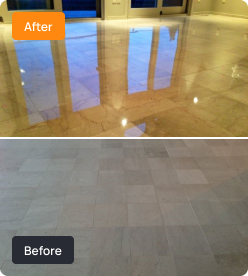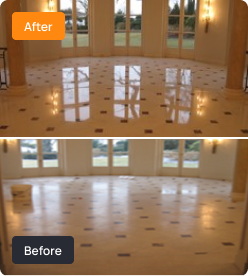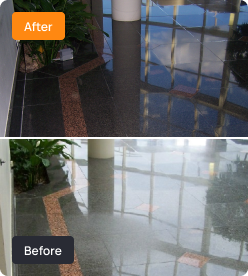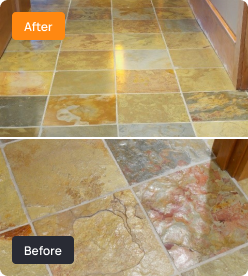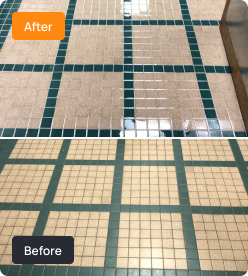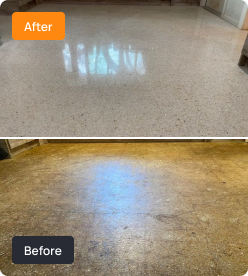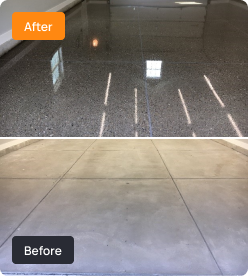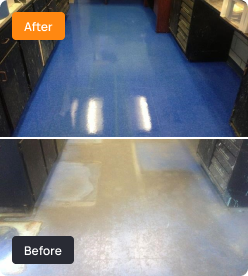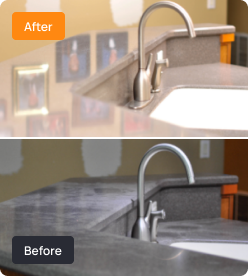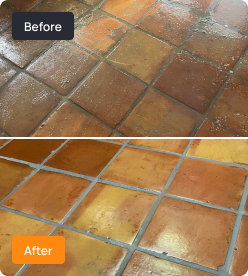How MARBLELIFE Polishes Granite to Recreate that Factory Shine
Granite surfaces are renowned for their durability and elegance, making them a popular choice in both residential and commercial spaces. However, despite granite’s toughness, many homeowners find that, over time, their once-glossy countertops and floors lose their brilliant shine. This dulling can be frustrating, especially when significant effort has been invested in cleaning and maintaining […]
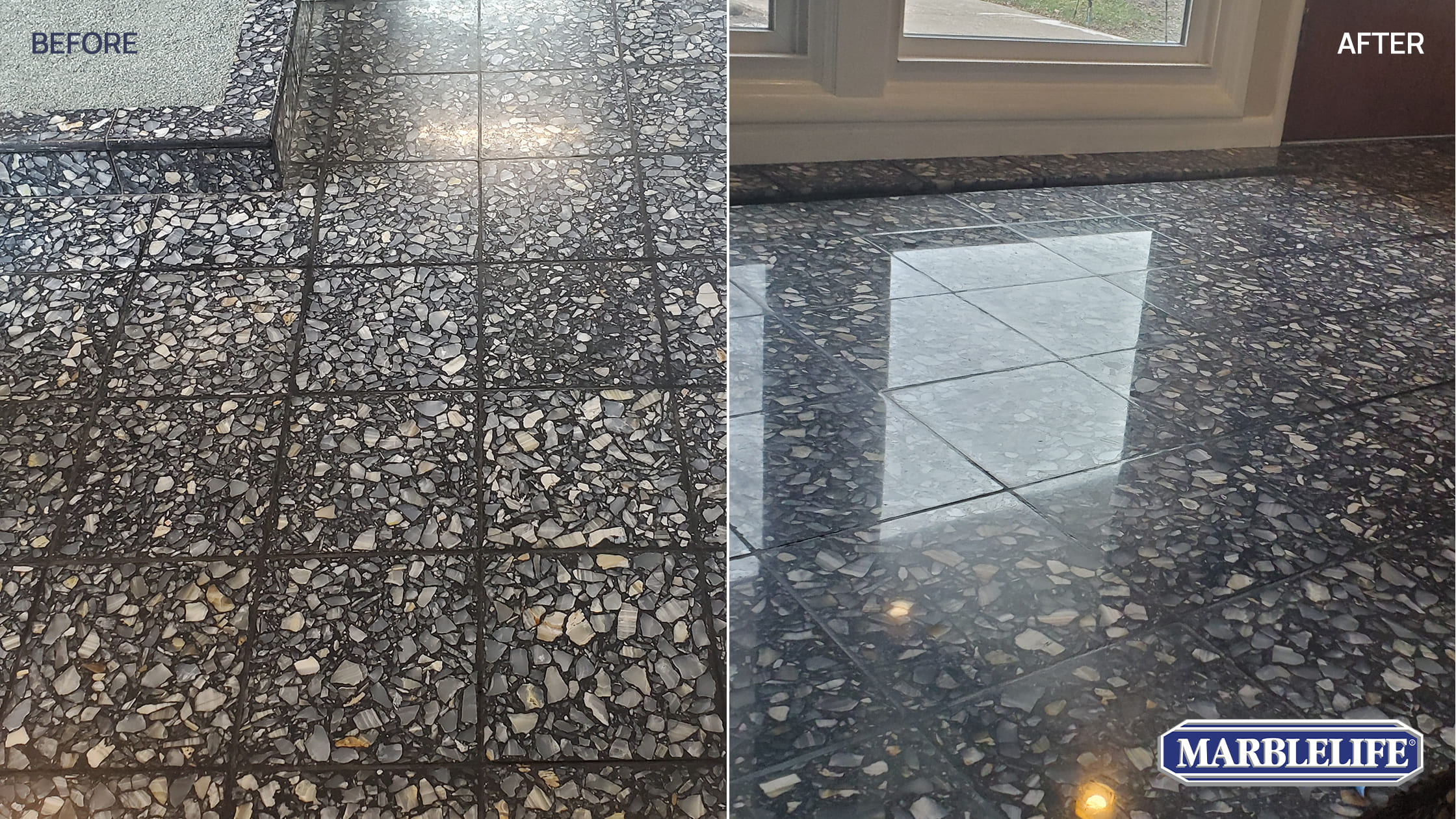
Granite surfaces are renowned for their durability and elegance, making them a popular choice in both residential and commercial spaces. However, despite granite’s toughness, many homeowners find that, over time, their once-glossy countertops and floors lose their brilliant shine. This dulling can be frustrating, especially when significant effort has been invested in cleaning and maintaining these surfaces.
Regular maintenance is essential to preserving granite’s visual appeal and functional qualities. Without proper care, granite can become dull, stained, or scratched, detracting from its natural beauty.
Thankfully, with the right cleaning, polishing, and sealing techniques, you can restore granite to its original, factory-like shine, allowing you to enjoy its stunning appearance for years to come.
MARBLELIFE, with decades of experience in stone restoration, has developed a deep understanding of what it takes to maintain and rejuvenate granite surfaces.
Our expertise in restoring the luster of granite ensures that whether you’re dealing with a dull countertop or a worn floor, your surfaces can be brought back to their former glory. Through specialized treatments and a commitment to quality, MARBLELIFE can help keep your granite looking as pristine as the day it was installed.
Granite and Its Challenges
Granite is celebrated for its exceptional durability, being one of the hardest natural materials used in construction.
Its resistance to acids surpasses that of marble, travertine, and concrete, making it the natural stone of choice for kitchen counters and bar tops. This toughness makes granite ideal for countertops, flooring, and other high-traffic areas.
However, while granite can withstand heavy use and resist scratches better than softer surfaces like Corian, marble, or engineered stone, it still requires regular maintenance to preserve its glossy finish. Without proper care, even this resilient stone can lose its shine, turning from a striking accent to a dull eyesore.
Common Problems Leading to Dullness
Several factors can cause granite surfaces to lose their luster. One of the most common culprits is the use of improper cleaning products. Many household cleaners contain acidic ingredients or harsh chemicals that can strip away the protective seal on the surface, leading to staining and darkening.
Topical Polishers are a Scam
Products that claim to “clean and polish” are often misleading. While they may coat or wax a surface, no cleaner can truly polish granite. These products exploit the common misconception that “shiny equals clean.” However, in reality, an old, worn surface can be clean yet lack shine.
Dull Is Not Dirty
In Europe, where centuries-old stone surfaces are common, it’s understood that a dull finish doesn’t necessarily mean a surface is dirty. In contrast, in the U.S., we tend to associate shine with cleanliness, leading to the marketing of waxes and coatings as “cleaners.” A better approach is to clean the surface first and, if necessary, use a shine-aid to enhance gloss afterward.
Cleaners with Wax Cause Buildup
Mixing cleaning with waxing can trap dirt and oils beneath the wax, leading to noticeable buildup and discoloration over time.
Often, the original shiny granite surface remains intact beneath the “clean and polish” wax layer, which was applied unnecessarily. Given granite’s hardness, it would take significant, sustained abuse to damage the surface. Unfortunately, removing wax buildup typically requires professional cleaning.
It’s better to use a cleaner specifically formulated to leave no wax deposits, such as MARBLELIFE GRANITE and QUARTZ Cleaner. If you wish to enhance the shine, MARBLELIFE GLOSS CONDITIONER can do so without wax, avoiding buildup.
Get Help from the Pros
If your shine is unsatisfactory, a professional craftsman can evaluate your surface. They can hone and actually polish a matte finish to a gloss or tone down a gloss to a satin finish, directly addressing the stone without relying on wax. If you’re dealing with wax buildup from an overhyped “clean and polish” product, professionals can remove it, restoring your natural stone. These consultations are FREE. Gaining solid knowledge about the actual issue and how to remedy it is essential for simplifying your cleaning process and boosting your confidence in maintaining the surface with ease.
The Role of Penetrating Seals in Maintaining a CLEAN, Shiny Surface
Sealants are crucial in maintaining the integrity and appearance of granite surfaces. These products don’t coat the surface but rather fill the natural pores in the stone.
Granite, marble, and concrete are all naturally porous and can absorb water, oil, and other liquids unless sealed. Sealants can last indefinitely—if they don’t encounter acidic spills or cleaners.
Acids can reverse the seal’s chemistry, stripping it from the surface. Common acidic cleaners, like those with lemon, orange, or vinegar, can inadvertently damage your seal.
The seal’s primary function is to prevent staining, keeping spills, dirt, and oils on the surface where they can be easily wiped away.
If the seal fails and the surface becomes stained, cleaning becomes much more difficult, akin to trying to clean the bottom of a test tube with a sponge.
Proper maintenance, including using the right products and regularly reapplying sealant, is essential to keeping granite looking as pristine and glossy as the day it was installed. Seals should be reapplied every year or so, depending on use and exposure, to ensure continued protection.
What Is Granite Polishing?
When a surface loses its reflectivity or shine, it’s because the surface is no longer mirror-smooth. This can be caused by a foreign substance on the surface, which can be addressed with cleaning, or by scratches that disrupt the smoothness.
For floors, this is often due to the “death by a thousand cuts” effect, where sand or dust is pressed into the stone underfoot, causing scratches.
To restore the shine, the surface must be ground down to the bottom of the deepest scratch to relevel it. This process requires significant energy to first remove excess material and then gradually polish the surface to a mirror-smooth finish.
This is not recommended for homeowners as it requires substantial training to achieve a successful finish that blends seamlessly with the rest of the surface.
If done poorly, polishing can expand the damage rather than fix it. Therefore, it’s recommended to bring in a trained stone craftsman for polishing repairs. Alternatively, a surface conditioner like MARBLELIFE GLOSS CONDITIONER can enhance surface gloss temporarily.
Step-by-Step Guide to How MARBLELIFE Polishes Granite
Step 1: Preparation
Granite polishing involves the use of water. If this is your first time, be prepared to spray water and mask surrounding areas to protect them. Professional craftsmen are skilled at controlling this process and will mask and protect as needed based on the location of the repair.
Step 2: Initial Cleaning
Clean the surface thoroughly to remove any dust, sand, or other abrasive particles that could cause scratches during the polishing process. Ensure the surface is free of any coatings that might obstruct direct contact with the stone.
Step 3: Honing the Surface
Honing involves grinding the stone to remove material down to the bottom of any scratches, thereby restoring a level surface. Care must be taken to avoid creating low spots that could become water traps. The repair must be blended into the surrounding surface to maintain a uniform level.
Step 4: Polishing the Granite
This step involves further grinding with increasingly finer diamond grits to achieve a mirror-smooth surface capable of reflecting light accurately. The process can be time-consuming and may require several passes depending on the stone’s type and color.
Step 5: Sealing the Granite
After polishing, the surface should be sealed, as the repair process may have removed the previous seal. Sealing reduces the risk of staining and keeps dirt and oil on the surface, where they can be easily wiped away with a suitable cleaner like MARBLELIFE Granite and Quartz Cleaner.
There is a misconception that if your granite was “resonated,” it doesn’t need sealing. While resonating does involve pulling polyester resin through the stone to reduce brittleness during transport, not all pores are sealed during this process. Thus, even resonated slabs benefit from additional sealing to enhance stain resistance and ease of cleaning.
Step 6: Post-Polishing Care
Maintaining the shine and beauty of your polished granite requires ongoing care. Regular cleaning with granite-safe products is essential to prevent the buildup of dirt and grime that can dull the surface.
However, just because a product claims to be “granite-safe” doesn’t mean it’s free from marketing hype. Avoid products that claim to polish, as true polishing requires the use of diamonds. Coatings or waxes, on the other hand, can trap dirt and lead to long-term maintenance issues.
MARBLELIFE is the expert in this area, with 20% of our projects involving fixing issues caused by inappropriate cleaners.
Always use a cleaner specifically formulated for granite, like MARBLELIFE Granite and Quartz Cleaner, and seal as needed with MARBLELIFE Stone Sealer or Granite Countertop Sealer.
If you need to enhance gloss temporarily, consider MARBLELIFE GLOSS CONDITIONER, but it’s recommended to consult with MARBLELIFE first, as our technicians may be able to provide a more permanent gloss enhancement.
By following this comprehensive approach, MARBLELIFE not only restores the natural beauty of your granite surfaces but also ensures they remain a stunning feature in your home for years to come. Granite care is easy with the right knowledge and products.
Professional Solutions for Stubborn Problems
While regular cleaning and maintenance can keep your granite in top condition, there are times when professional intervention is necessary. Deep stains, significant dulling, chips, cracks, seam repairs, or suspected damage to the seal may require expert care.
MARBLELIFE professionals are equipped to handle these challenges, using specialized tools and techniques to restore your granite to its original factory finish. When everyday products aren’t enough, calling in the experts ensures your granite surfaces are not only repaired but also protected from future issues.
Take the next step in preserving your granite surfaces by trying the recommended products or reaching out to MARBLELIFE for a FREE CONSULTATION. With professional help, you can restore and maintain the elegant shine of your granite for years to come. Call 888-463-2780 today to schedule your consultation.


